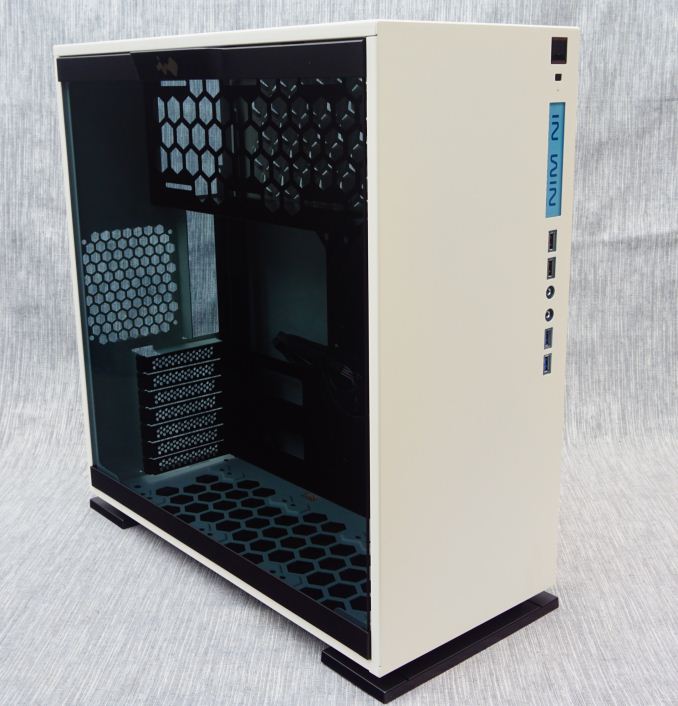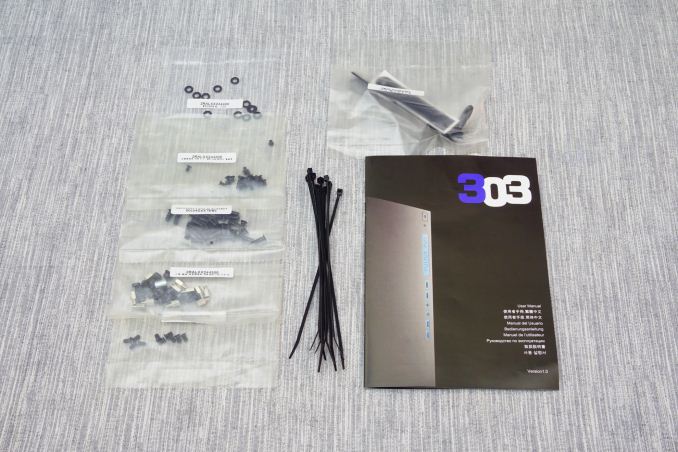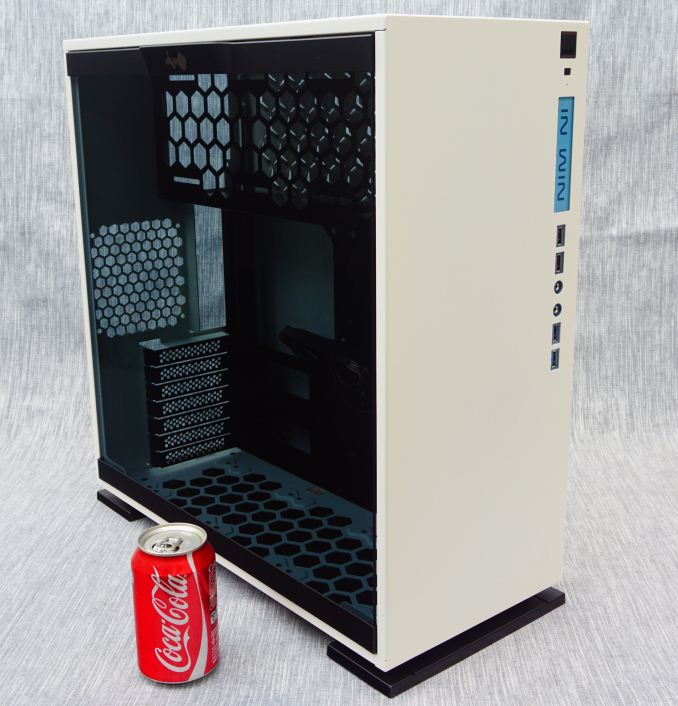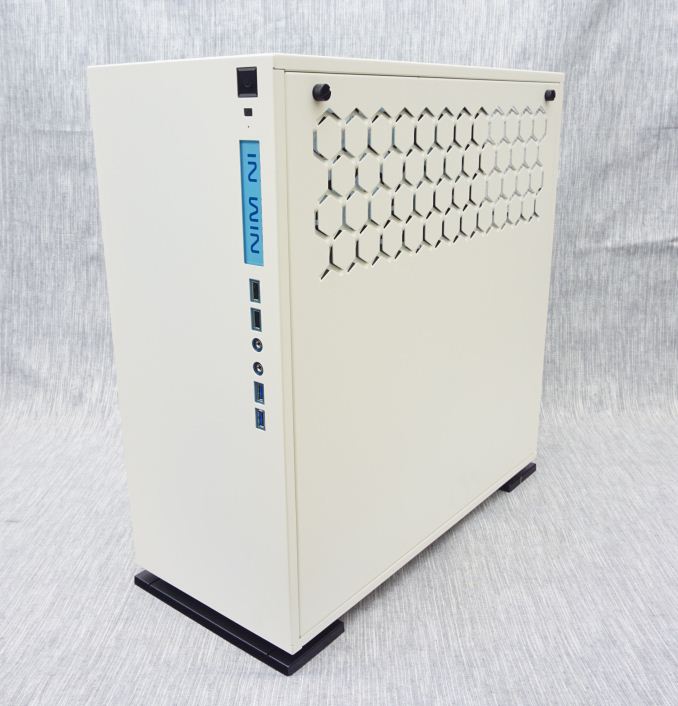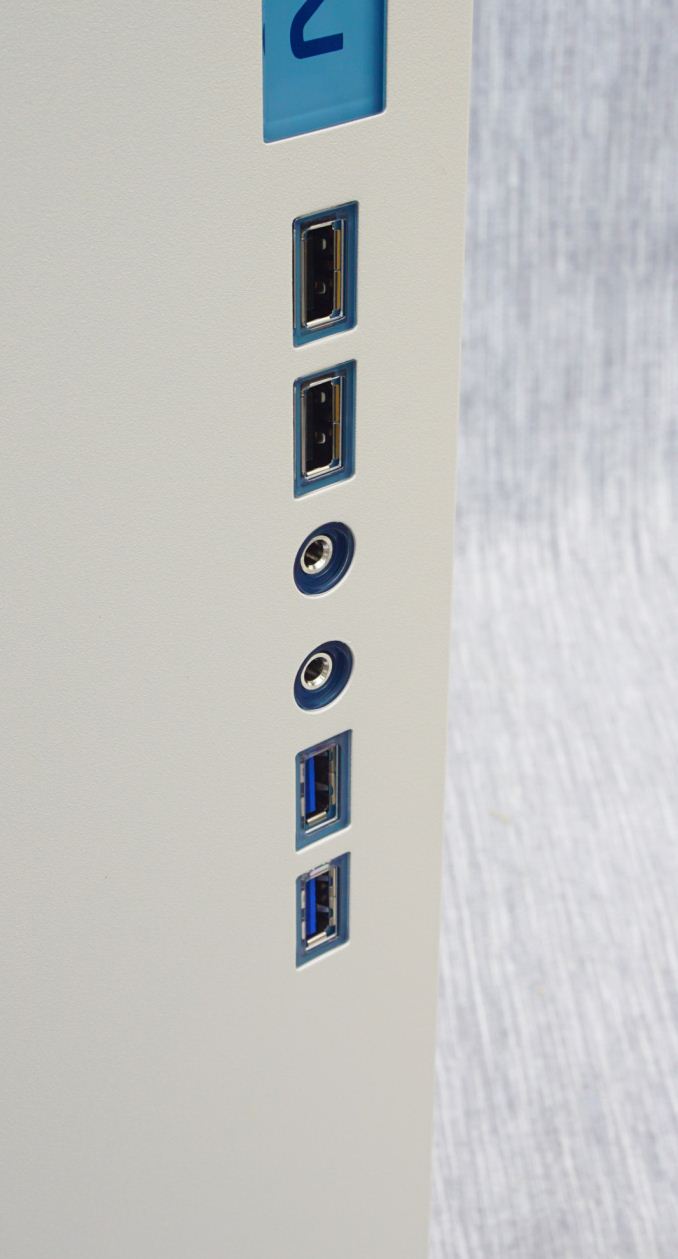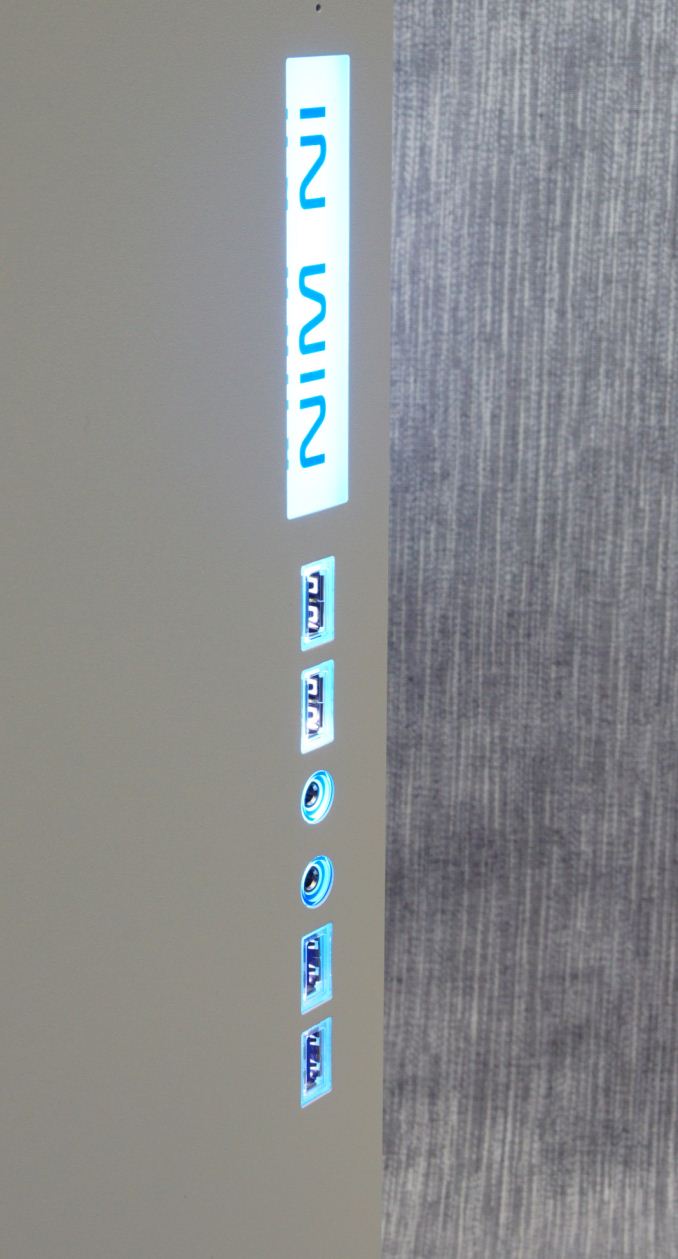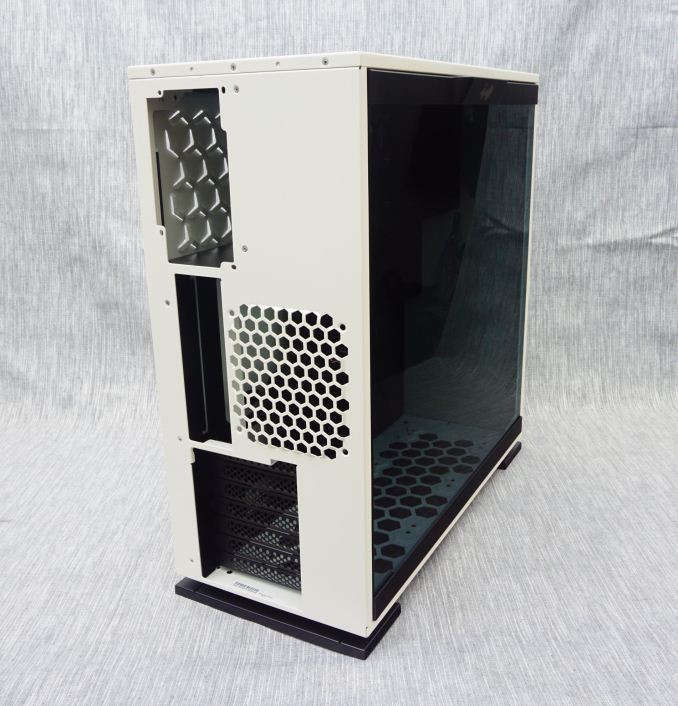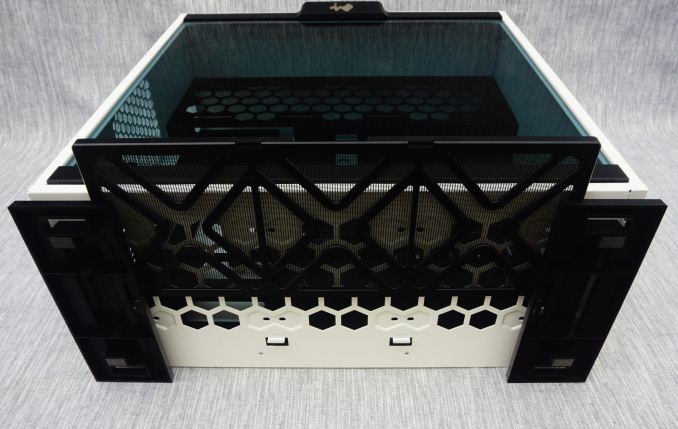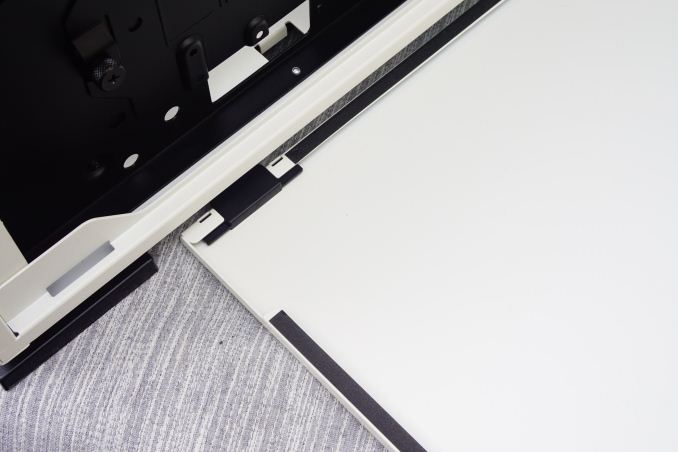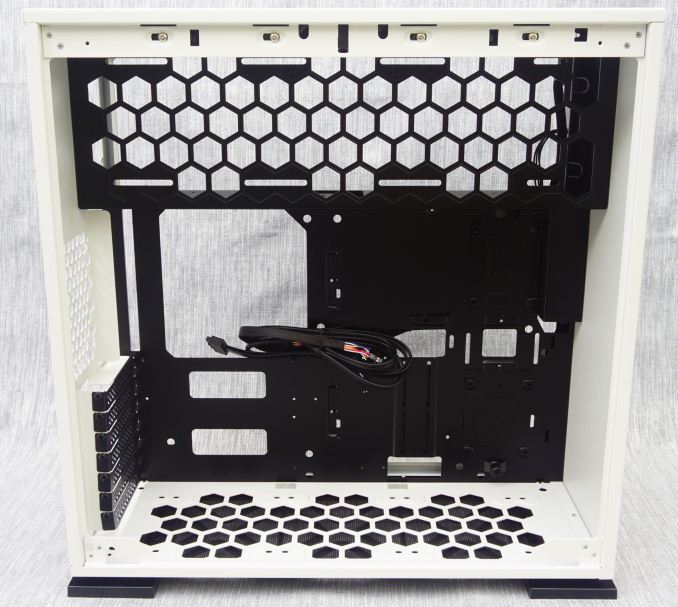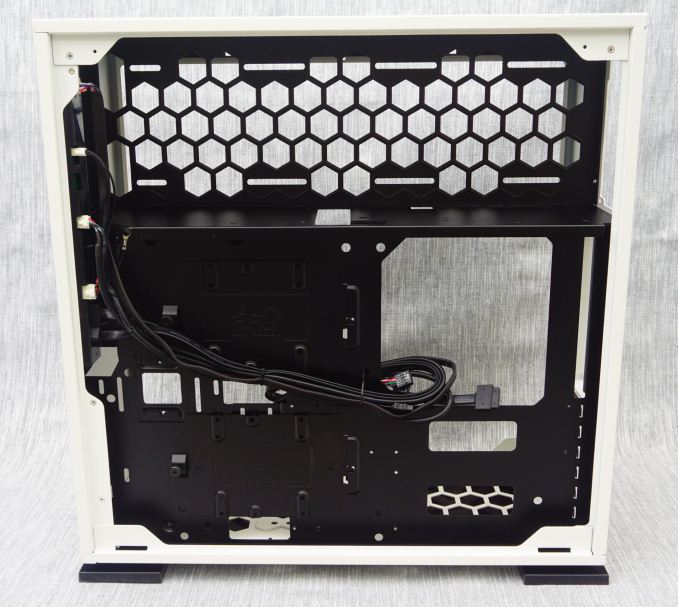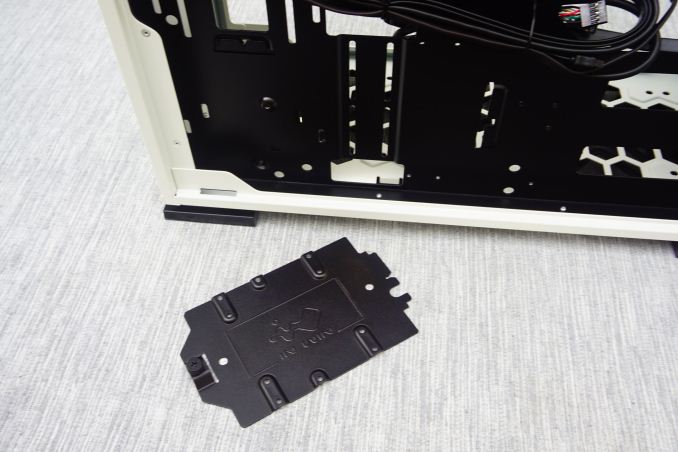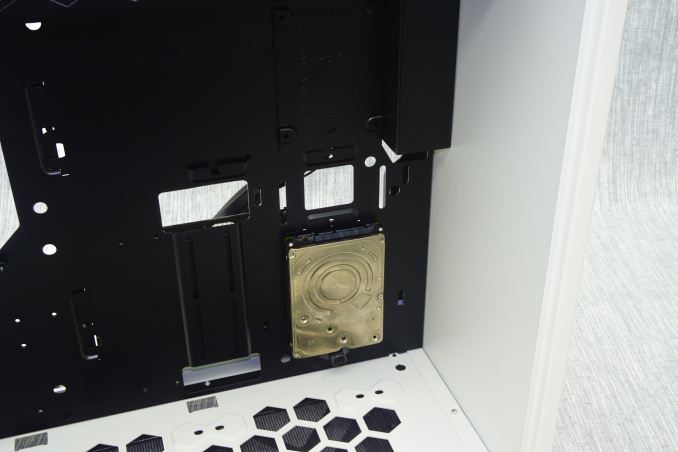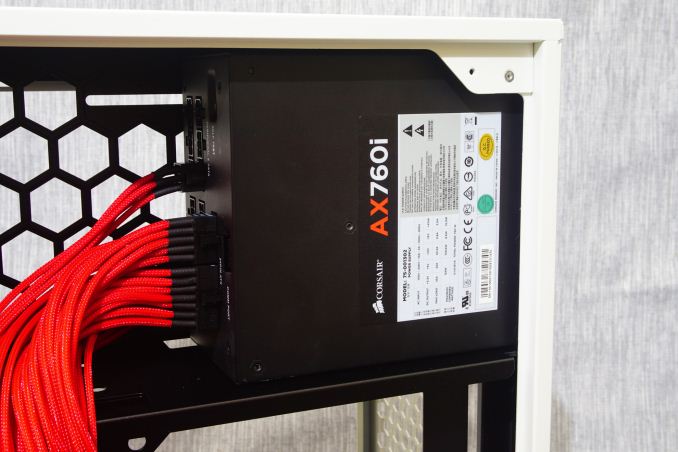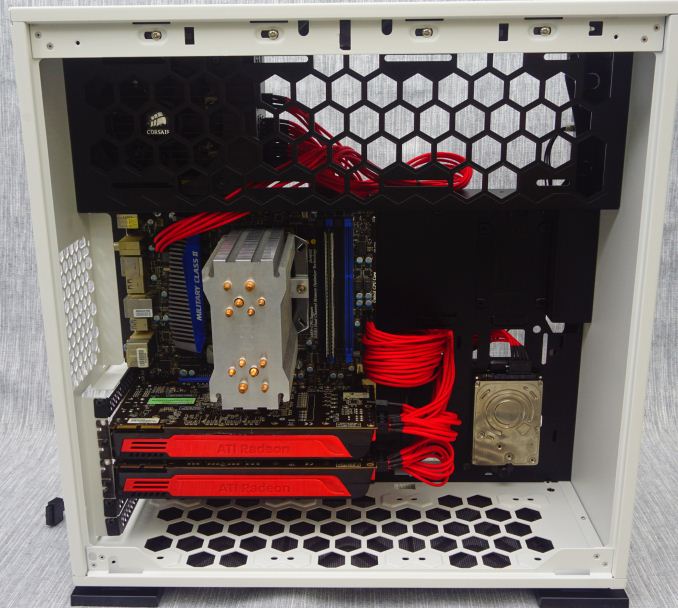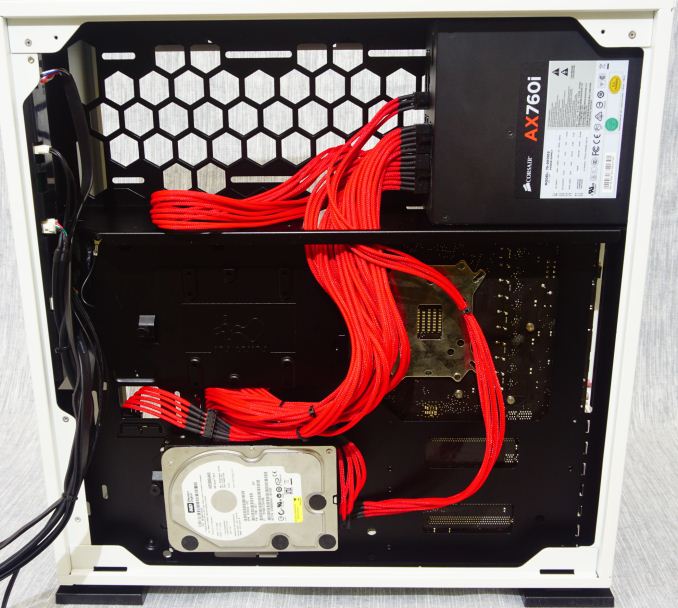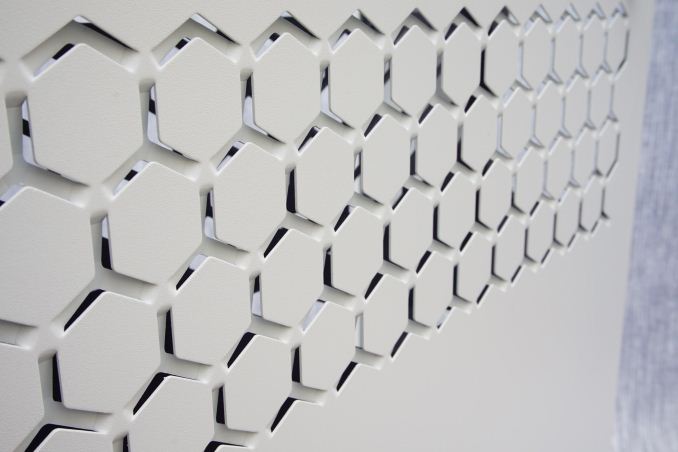
Original Link: https://www.anandtech.com/show/10723/the-in-win-303-case-review
The In Win 303 Case Review: Minimalist ATX with Tempered Glass for $93
by E. Fylladitakis on October 12, 2016 8:00 AM EST- Posted in
- Cases/Cooling/PSUs
- In-Win
- ATX
- Case
- In Win 303
- InWin 303
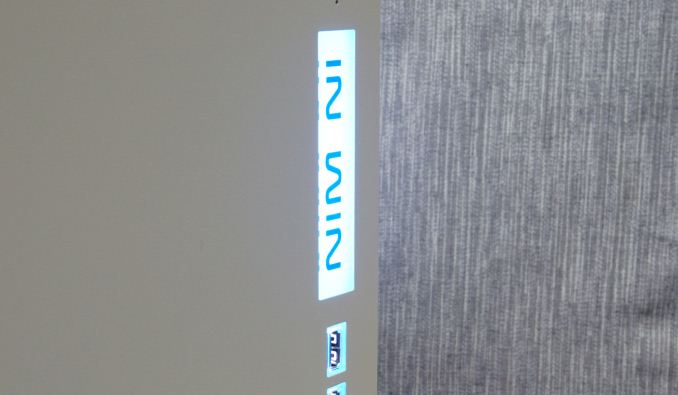
In Win is one of the oldest manufacturers of PC cases and power supply units. The company was founded in 1985 and they recently celebrated their 30th anniversary. Unlike most other companies, In Win has remained almost exclusively focused on the design and marketing of PC cases and PSUs rather than trying to diversify into other areas of the market. Today In Win is offering one of the most comprehensive selections of cases, ranging from low-cost towers to entirely unique designs.
Introduction
It's been a while since we had a deep look at an In Win design. In Win supplied us with the 303, one of their most recent ATX tower cases. In Win promotes the 303 as a combination of a unique aesthetic with practical design and a reasonable price tag. On paper, the 303 does appear to be a very interesting product. We shall have a closer look at its quality and features, as well as assess its thermal performance in this review.
| In Win 303 | ||
| Motherboard Size | ATX, Micro-ATX, Mini-ITX | |
| Drive Bays | External | - |
| Internal | 2 × 3.5" 2 × 2.5" |
|
| Cooling | Front | - |
| Rear | 1 × 120 mm | |
| Top | 3 × 120 mm | |
| HDD | - | |
| Bottom | 3 × 120 mm | |
| Radiator Support | Front | - |
| Rear | Up to 120 mm | |
| Top | Up to 360 mm | |
| Side | - | |
| Bottom | - | |
| I/O Port | 2× USB 3.0, 2× USB 2.0, 1× Headphone, 1× Mic | |
| Power Supply Size | ATX | |
| Clearances | HSF | 160 mm |
| PSU | 240 mm | |
| GPU | 350 mm | |
| Dimensions | 500 mm × 215 mm × 480 mm 19.69 in × 8.46 in × 18.9 in |
|
| Prominent Features | · Exquisitely Modest Aesthetic Design · Radiant Luminosity · Accelerated Tool-less Design · User Friendly Dust Filter · Versatile Cooling Options |
|
| Price | $92.25 | |
Packaging & Bundle
We received one of the very first samples of the 303 and In Win did not have the retail package ready at the time, so we cannot comment on it. We did receive the full retail bundle though and it was unsurprisingly basic. The company supplies only a typical manual, the required mounting hardware, support braces for the heavy expansion cards and ten cable ties.
The Exterior of the In Win 303
The In Win 303 visually is very simple, perhaps even excessively minimalistic. All of the case’s panels are metal and only the side panels are removable. The front and top panel of the case are entirely flat, with just the I/O ports, buttons and an illuminated panel with the company’s logo at the front of the case. We received the white version of the 303 that has white exterior metal panels, with the exception of the smoked tempered glass door (real glass, not acrylic) left side panel. The paint is very well applied. Note however that the white paint of the 303 is not perfect white or snow white, but leans slightly towards the floral white hue.
11.2 oz soda can added as a size reference.
Measuring 50 cm tall, 21.5 cm wide and 48 cm deep (19.7 × 8.5 × 18.9 in), the In Win 303 is not small for an ATX tower case. It has a volume of 51.6 liters, almost identical to that of an advanced ATX case but with optical drive bays, the Corsair 450D (also 51.6 liters). It is larger than the Zalman Z9 Neo (48.4 liters) and NZXT S340 (38.4 liters), which are relatively low-cost ATX tower cases, but it also is very heavy, tipping the scales at 11.2 kg, making it at least 50% heavier than typical ATX cases. A portion of that will be the glass panel.
The front I/O ports and buttons can be found across the right side of the front panel. A large square Power On button can be seen at the top corner of the front panel, followed by a small square reset button. An illuminated panel with the company logo separates the I/O ports from the two buttons. Two USB 2.0 ports, 3.5 mm audio jacks and two USB 3.0 ports can be seen in line under the illuminated panel. These six ports also have illuminated surrounds that will stay constantly lit as long as the system is powered on.
A look at the rear of the In Win 303 case hints that the interior design will be more or less atypical. The system area is at the bottom of the case and the PSU compartment is above it, resembling the classic ATX configuration. However, the PSU is mounted vertically, drawing air in from the right side panel of the case. One slot for a 120 mm fan can also be seen.
The bottom of the case serves as its main air intake. The clearance between the case and the surface is barely adequate, with the 303 standing on two large but short rectangular feet. A large nylon filters covers the entire intake, which can be removed by pulling it from the side of the case. We found this to be an excellent design choice, as the filter can be easily accessed from the side of the case. Considering the length of these filters, removal from the rear of the case is typically problematic and inconvenient, making this design a bit nicer.
The Interior of the In Win 303
A fine detail that one can notice once the side panels are removed is the foam strip that In Win applied on the interior edges of the side panels. These strips seal the space between the side panel and the case, preventing scratches and cancelling certain possible rattling/vibration noises.
The removal of the case’s panels reveals a peculiar interior, with the PSU compartment above the motherboard tray but taking only the right half of the space. There are no cages for the drives or other items, leaving the interior looking very plain and empty. The metal frame that separates the PSU compartment from the rest of the case has slots for up to three 120 mm fans or an equivalent liquid cooling radiator. These fans will be forcing air out mostly from the right side panel, but some of the air flow will be getting pushed behind the motherboard’s tray.
The motherboard tray, the PSU compartment frame and the expansion card covers are black, whereas every exterior panel of the case is white. There is a fair opening on the motherboard tray for the installation of aftermarket CPU coolers that should be large enough for any ATX motherboard. There are openings to the top and right side of the motherboard for the cables, as well as two more openings below the motherboard in case a Micro ATX or Mini ITX motherboard is used. None of these openings have rubber grommets.
There are two slots for 3.5”/2.5” drives to the right side of the case, behind the motherboard. The small metallic drive trays are removable and one 3.5” or 2.5” drive can be installed on each of them using the supplied screws.
Two more drive trays can be found inside the system area, next to the rail where the large expansion card optional support braces can be attached. These trays can only accommodate 2.5” drives.
For the means of this review, we installed a Corsair AX760i with the red cable set, for strong visual contrast. The AX760i easily fits inside the PSU compartment of the In Win 303, with plenty of room for managing the cables. The excessive 32 mm clearance behind the motherboard tray makes cable management very easy. Note however that the PSU is installed with its fan facing inside the system, forcing it to draw air from the inside of the system area rather than from the outside of the case. Its position will also have its fan right in front the first 120 mm fan, if one is installed. This can significantly increase the operational temperature of the PSU if a radiator is installed there, as the thermal energy from the radiator will be getting released right in front of its intake.
The system area of the In Win 303 is roomy but narrow. There is virtually no clearance between the motherboard and the bottom of the case with an ATX motherboard installed, preventing the installation of a liquid cooling radiator at the bottom of the case. If a Micro ATX or Mini ITX motherboard is installed however, the use of a radiator up to 360 mm long is very possible. A radiator up to 360 mm long can be installed on the PSU compartment frame and a small 120 mm radiator can be installed on the rear panel of the 303. Liquid cooling may be necessary for an advanced system, as the clearance for air coolers is only 160 mm, ruling out many top-tier air coolers. Cards of virtually any length can be installed, but we strongly recommend cards up to 350 mm long, as longer cards will block the cable openings and the 2.5” drive trays.
Test Setup
Professional testing requires the emulation of real-world situations but with repeatable results; thus, a perfectly controllable test setup and environment are required, especially for comparable results. Testing the thermal performance of any case with a typical real-world setup technically limits the comparability of the results to this setup alone, as an active system interacts with its environment and the change of a single component would alter myriads of variables. As such, we developed synthetic loads that emulate the thermal output of real systems, which however are passive, steady and quantifiable. As such, the thermal testing now displays the thermal capabilities of the case alone, as if it would have to deal with the entire thermal load by itself, regardless of the system that would be installed inside it. Laboratory data loggers are being used to monitor the PT100 sensors and control the safety relays, which are fully accessible via our custom software. Three such loads have been developed; the ATX version simulates a 200W CPU, 50W VRM, 30W RAM and 4 × 120W GPU card thermal load. Finally, three 3.5" HDD dummy loads have also been created, with each of them converting 30 W of electrical power to thermal, bringing the total thermal load of the ATX test setup up to 850 Watts. As such, the thermal load is immense and only the best of cases will be able to handle it for more than a few minutes, we are also performing a test with a thermal load of 400W, with all of the aforementioned components except the HDD drives at about 42% power, which is more suitable for the majority of cases.
Noise testing has been performed with a background noise level of 30.4dB(A). Advanced noise testing is also being performed, in order to assess the ability of the case to dampen the noise of the components installed inside it. This includes the installation of two noise-generating sources (strong fans) inside the case, one positioned approximately over the first expansion slot and one over the CPU area, which generate ≈ 44.2 dB(A) when unobstructed. During the advanced noise test, all stock cooling options of the case are entirely disabled.
Do note that the In Win 303 can support only two 3.5” devices, so the total actual thermal load in every test is reduced by 30W.
Results & Discussion
A quick look at our thermal performance results would suggest that the performance of the In Win 303 is very poor comparably to other similar cases. Even though this is the case when looking at the raw performance numbers, we need to consider that the In Win 303 does not have a single stock fan installed. Without even one stock fan to be found, we actually expected our testing to fail entirely, with the testing equipment reaching temperatures that would force the failsafe to kick in. That the In Win 303 managed to even complete our thermal testing was a pleasant surprise, hinting that it should maintain reasonable temperatures with a low to medium power PC installed, even without any additional cooling fans. For gaming PCs and advanced systems however, the In Win 303 could certainly use a couple of good fans. We should also add that the temperature of the 3.5” drives was relatively high. Their placement suggests that they will always be receiving minimal cooling, so it is clear that these slots are meant for efficient mainstream storage HDDs. High performance models could easily reach uncomfortably high operating temperatures under heavy load.
As the In Win 303 has no stock cooling or any other moving parts, it understandably does not make any noise at all by itself. The noise of the system will solely depend on the parts and fans that will be installed by the user. Our advanced noise testing revealed that the In Win 303 has very good noise dampening capabilities, dampening the noise of the installed testing equipment significantly. Our instrumentation measured a drop of 4 dB(A) during our advanced testing, a substantial figure for a case without additional sound dampening material installed on its panels.
Conclusion
In Win has myriads of designs and tries to target each and every one of them towards a different type of user. The 303 can be described as an attempt to create a minimalistic, fully metallic design for users that like showcasing their advanced systems. Aesthetics are a subjective matter and the In Win 303 is a complex subject, as it jumps from complete plainness and austere geometrics to fancy neon-like lights. It could be construed that the panel with the company logo and the lighting at the front breaks the minimalistic cleanness of the design, reducing the potential buyers of the case instead of increasing it.
Perhaps the primary feature of the 303 is its excessive simplicity, inside and outside. There are no external drives and no internal drive cages - only four metallic removable trays for the installation of a small number of 3.5” and 2.5” drives. In Win kept the use of plastic to the minimum possible; only the feet of the case, the dust filter and the illuminated parts of the faceplate are plastic. There are no plastic parts inside the 303, not even rubber grommets on the cable holes. Such a basic design that revolves entirely around the metallic motherboard tray probably sounds interesting to a modder that mostly cares about building a good-looking system. The downside is that the 303 can hold a very small number of internal devices, no 140 mm fans/radiators and no external drives, which is disheartening for a case of this size. Finally, the “accelerated tool-less” design that the company advertises is misleading, as without a screwdriver one can only remove the side panels. The installation of each and every device requires the use of a screwdriver.
In terms of quality, the In Win 303 is an admirable case with excellent mechanical properties. The steel panels are very strong and excellently joined with each other, forming an admirably robust chassis. Some people may express concerns regarding the safety of using a tempered glass side panel, but tempered glass actually is very tough, possibly even tougher than acrylic (depending on its quality). Of course it is not impervious and it should not be hit with hard pointed materials, but it is typically advertised as surviving a fall from 1-1.2 meters or a reasonable bump. The weakest part of the case is not the tempered glass side panel but the plastic feet, which may be very large and strong but the severe weight of the case makes them its most vulnerable spot.
In summary, the In Win 303 is marketed towards users that enjoy simple products and want a unique design that will not cost an arm and a leg. With a retail price of $93 including shipping at the time of this review, we believe that the In Win 303 is reasonably priced for a metal tower with a tempered glass side panel. However, the In Win 303 relies heavily on its appearance to generate sales and the design does have certain shortcomings that the potential buyer needs to consider before purchasing it (such as cooling/fans).

